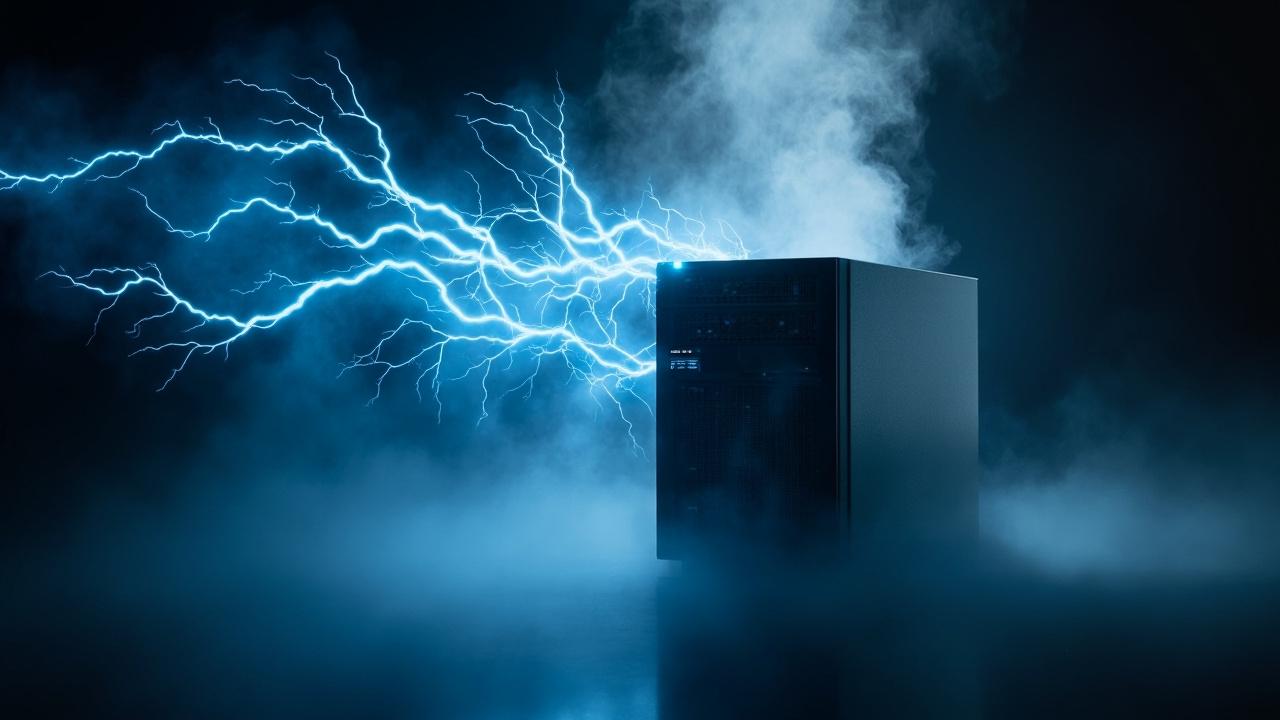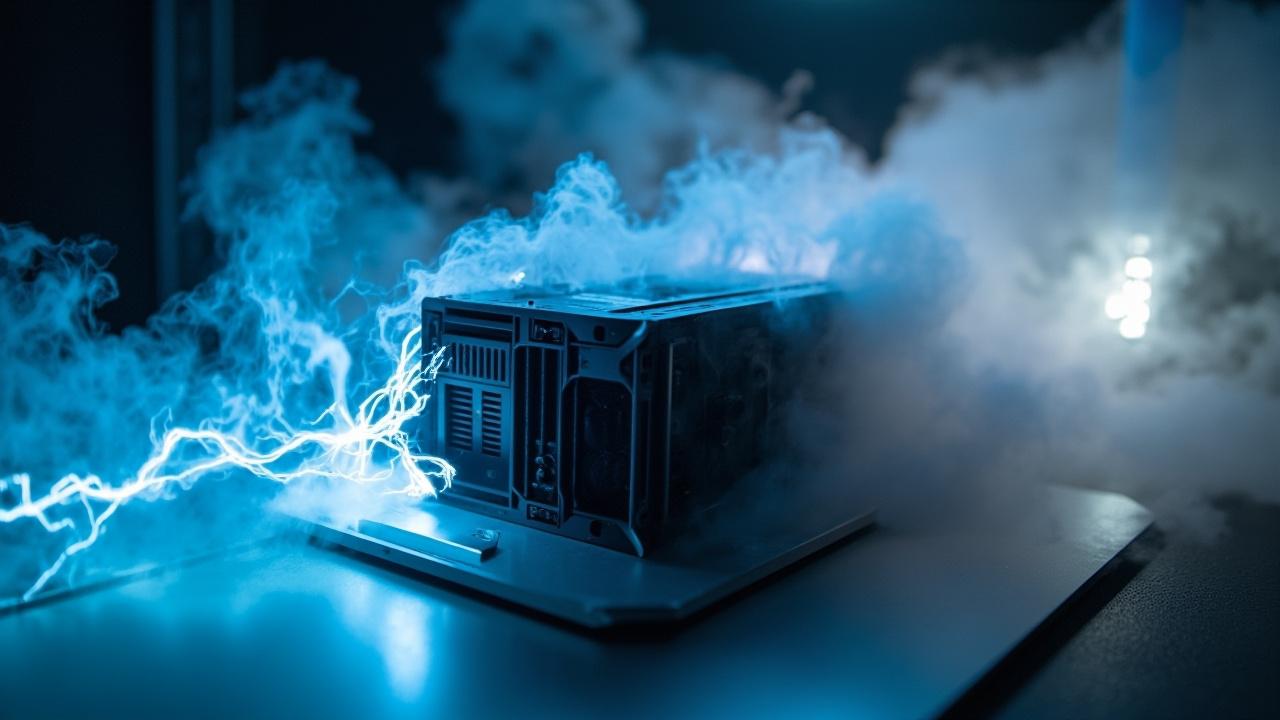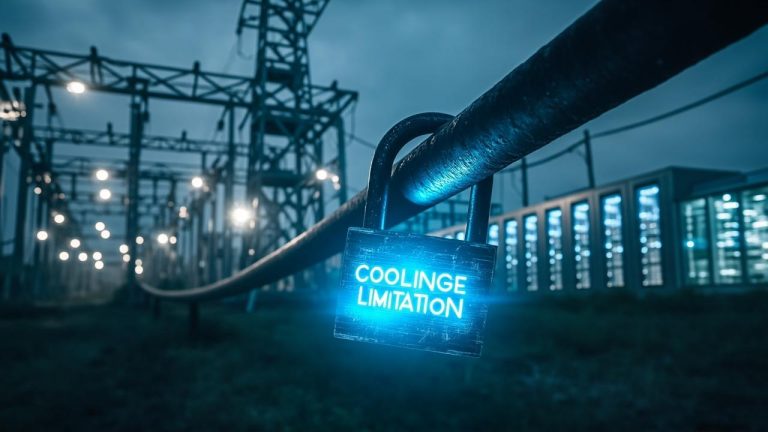The Cost of Downtime
Data center humidification is critical. Uncontrolled humidity in your data center can lead to catastrophic failures and staggering financial losses. This article delves into the often-overlooked threat that improper humidity levels pose to your mission-critical IT infrastructure, potentially costing your organization millions. Are you truly prepared for the unseen enemy lurking within your server rooms?
The modern data center is the heart of countless businesses, a repository of critical data and applications. When this heart stops beating, even for a short period, the consequences can be devastating. We’re not just talking about a temporary inconvenience; we’re talking about a full-blown crisis that can cripple operations, erode customer trust, and inflict irreparable damage on your brand. Downtime isn’t just an IT problem; it’s a business problem with far-reaching implications.
The immediate financial costs of data center downtime are staggering. Studies have shown that even a brief outage can cost businesses hundreds of thousands, even millions, of dollars per incident. These costs include lost revenue, decreased productivity, and the expense of emergency repairs. But the hidden costs can be even more insidious: the reputational damage, the legal ramifications of failing to meet service level agreements (SLAs), and the long-term erosion of customer loyalty.
Meet Your Invisible Enemy
Relative humidity (RH) is a critical, yet often misunderstood, factor in maintaining the health and stability of your data center. It represents the amount of moisture present in the air, expressed as a percentage of the maximum amount of moisture the air can hold at a given temperature.
In the context of a data center, RH significantly influences the performance and longevity of your expensive hardware. Failing to understand and manage RH can lead to a cascade of problems, from subtle performance degradation to catastrophic equipment failure.
The Goldilocks Zone: Ideal RH Range
The ideal RH range for data centers typically falls between 45% and 55%. This “Goldilocks zone” ensures a balance that minimizes the risks associated with both excessively dry and excessively humid conditions. Maintaining this range is not merely a suggestion; it’s a necessity for preserving the integrity of your IT infrastructure.
Equipment manufacturers often specify this range in their environmental guidelines, and adhering to it helps ensure warranty compliance and optimal performance. Straying outside this range, even for short periods, can have detrimental effects that accumulate over time.
The Perils of Too Little: The Low Humidity Threat
Low humidity creates an environment ripe for electrostatic discharge (ESD). As the air becomes drier, it becomes a less effective conductor of electricity, allowing static charges to build up on surfaces, including electronic components and personnel. A simple touch can then trigger a sudden discharge of static electricity, potentially damaging sensitive circuits and causing immediate or latent failures. In addition, low humidity can cause materials to dry out and become brittle, increasing the risk of cracks and other physical damage.
The Dangers of Excess: High Humidity Havoc
Conversely, high humidity poses its own unique set of threats. It accelerates the corrosion of metallic components, as moisture acts as an electrolyte, facilitating the electrochemical reactions that lead to rust and oxidation. Furthermore, when temperatures fluctuate, high humidity can lead to condensation forming on surfaces.
This condensation creates a pathway for electrical shorts, potentially causing immediate equipment failure. The long-term effects of corrosion and condensation can significantly reduce the lifespan of your hardware, leading to premature replacements and increased operational costs. A properly implemented data center humidification system helps mitigate these risks.
The Static Shockdown
Low humidity in a data center isn’t just a minor inconvenience; it’s an invitation for electrostatic discharge (ESD) to wreak havoc on your sensitive electronic components. When the air becomes too dry, it becomes an excellent insulator, allowing static charges to build up on surfaces and personnel. This invisible threat can lead to costly equipment failures and unexpected downtime, turning a seemingly harmless environmental factor into a major operational risk.
Understanding Electrostatic Discharge (ESD)
ESD occurs when a static charge rapidly transfers between two objects with different electrical potentials. In a data center environment, this can happen when a technician walks across a dry floor, generating thousands of volts of static electricity. When they then touch a server component, the built-up charge discharges, potentially damaging the delicate circuitry within.
The lower the humidity, the higher the propensity for static charge generation and the more severe the potential discharge. This is because dry air provides less opportunity for the dissipation of charge, allowing it to accumulate to dangerous levels.
The Impact of ESD on Electronic Components
The effects of ESD can range from immediate and catastrophic failure to subtle, latent damage that shortens the lifespan of equipment. Imagine a microchip with billions of transistors, each incredibly small and sensitive. An ESD event can overload these transistors, causing them to fail. In some cases, the damage is immediately apparent, with equipment ceasing to function.
However, in other instances, the damage is less obvious. The component may continue to operate, but its performance is degraded, and it’s more likely to fail prematurely. This type of latent damage is particularly insidious because it can be difficult to detect and can lead to unpredictable system failures down the line. For example, a server’s memory module might experience intermittent errors due to ESD damage, eventually leading to a complete system crash.
Mitigating the Risks of ESD
Fortunately, there are several steps data center managers can take to mitigate the risks of ESD. One of the most effective strategies is to maintain the recommended relative humidity range (typically 45-55%) within the data center. Achieving this often requires implementing a reliable data center humidification system. In addition to humidity control, implementing antistatic measures is crucial.
This includes using antistatic flooring, work surfaces, and wrist straps for technicians. Regular training for personnel on proper handling procedures for electronic components is also essential. Furthermore, ensuring that all equipment is properly grounded helps to dissipate static charges safely. By implementing these preventative measures, data centers can significantly reduce the risk of ESD-related damage and ensure the continued reliable operation of their critical infrastructure.
Corrosion and Condensation
High humidity presents a insidious threat to the longevity and reliability of data center hardware. When relative humidity levels consistently exceed the recommended range, typically above 60%, the rate of corrosion on metallic components within servers, networking equipment, and storage devices dramatically increases.
This corrosion, often unseen in its early stages, gradually weakens the structural integrity of connectors, circuit boards, and other vital parts. Over time, this can lead to intermittent failures, reduced performance, and eventually, catastrophic equipment malfunctions, all stemming from the electrochemical reactions accelerated by the presence of excessive moisture in the air.

Furthermore, high humidity creates the ideal conditions for condensation to form on the surfaces of electronic components, particularly when temperatures fluctuate. As warm, moist air comes into contact with cooler surfaces, such as integrated circuits or the chassis of a server, water vapor condenses into liquid. This condensation can cause short circuits, as water acts as a conductor between closely spaced electrical contacts.
These shorts can immediately damage components or create latent defects that lead to premature failure. The cumulative effect of repeated condensation cycles and corrosive effects can significantly shorten the lifespan of critical hardware, necessitating frequent replacements and increasing operational expenses.
The long-term consequences of unchecked corrosion are particularly concerning. Gradual degradation leads to subtle performance declines that may go unnoticed initially, affecting processing speeds, data transfer rates, and overall system responsiveness. Addressing these challenges requires proactive measures, including precise environmental controls and strategic implementation of data center humidification systems.
The accumulation of corrosion byproducts can also create conductive paths, further exacerbating the risk of electrical shorts and component failures. Early detection of these issues, along with implementing preventive measures, can save significant costs and improve overall reliability.
Dust’s Deadly Dance
Dust, an ever-present enemy in data centers, poses a significant threat to the reliability and performance of sensitive electronic equipment. While often viewed as a standalone nuisance, dust’s impact is greatly amplified by humidity levels. When humidity is not properly controlled, it can exacerbate the problems caused by dust accumulation, leading to a cascade of issues that can cripple your infrastructure.
In environments with fluctuating or uncontrolled humidity, dust particles become more problematic, settling more readily and adhering more strongly to surfaces. This creates a scenario where even small amounts of dust can have a disproportionately large negative impact.
The mechanism by which humidity influences dust behavior is multifaceted. High humidity, for instance, causes dust particles to clump together, forming larger, heavier aggregates that settle more quickly. These larger particles are more likely to obstruct airflow around critical components, leading to localized hotspots and reduced cooling efficiency.
Furthermore, the increased surface area of these clumps provides more opportunity for moisture absorption, creating a breeding ground for corrosion. Conversely, low humidity can cause dust particles to become electrostatically charged, attracting them to surfaces and making them difficult to remove. This electrostatic attraction can also interfere with the operation of sensitive sensors and optical components.
The consequences of uncontrolled dust accumulation, especially when coupled with improper humidity, are far-reaching. Accumulated dust acts as an insulator, trapping heat and preventing efficient heat dissipation from electronic components. This leads to increased operating temperatures, which can significantly reduce the lifespan and reliability of servers, networking equipment, and other critical hardware. In extreme cases, overheating can cause components to fail outright, leading to downtime and data loss.
Moreover, dust can clog air filters in cooling systems, reducing their efficiency and increasing energy consumption. The combination of dust and high humidity can create conductive pathways, leading to short circuits and equipment failure. For effective particulate management, a comprehensive strategy that incorporates air filtration, regular cleaning, and precise data center humidification control is essential to mitigate these risks.
| Issue | Description |
|---|---|
| Dust Accumulation | Insulates components, leading to overheating and reduced airflow. |
| High Humidity | Causes dust to clump, increasing settling and potential for corrosion. |
| Low Humidity | Electrostatic charge of dust makes it hard to remove. |
| Combined Dust and Humidity | Leads to increased operating temperatures, reduced lifespan, and potential short circuits. |
Beyond Hardware
The impact of humidity extends far beyond the immediate health of servers and network devices; it significantly influences the performance and efficiency of a data center’s cooling infrastructure. Cooling systems, such as Computer Room Air Conditioners (CRACs) and chillers, are designed to remove heat generated by IT equipment. However, their effectiveness is intrinsically linked to the humidity levels within the data center.
When humidity is outside the optimal range, these systems struggle to maintain the desired temperature, leading to increased energy consumption and potential equipment strain. Specifically, cooling systems expend more energy when attempting to compensate for excessively dry or humid air, as they are forced to work harder to achieve the target temperature and humidity levels.
One of the key challenges arises from the interplay between temperature and humidity. Cooling systems cool air by passing it over chilled coils, which causes moisture to condense out of the air. If the incoming air is already excessively humid, the cooling system has to work harder to remove the excess moisture, reducing its cooling capacity and increasing energy consumption.
Conversely, if the air is too dry, the cooling system may overcool the air in an attempt to raise the humidity, again leading to wasted energy. This delicate balance underscores the need for a well-integrated approach that considers both temperature and humidity when designing and operating data center cooling systems. Implementing efficient data center humidification strategies becomes crucial for maintaining this balance.
Furthermore, improper humidity control can lead to issues with the cooling equipment itself. High humidity can cause corrosion within the cooling units, reducing their lifespan and efficiency. Low humidity can lead to static buildup within the cooling units, potentially damaging sensitive electronic components.
The integration of optimized cooling and humidification systems is paramount for achieving overall data center efficiency. By maintaining the correct humidity levels, data centers can ensure that their cooling systems operate at peak performance, reducing energy consumption, extending equipment lifespan, and ultimately lowering operating costs.
| Issue | Impact on Cooling Systems | Consequence |
|---|---|---|
| High Humidity | Increased workload to remove moisture. | Reduced cooling capacity, higher energy consumption, potential corrosion. |
| Low Humidity | Potential overcooling to increase humidity. | Wasted energy, increased operating costs, static buildup. |
| Improper Humidity | Reduced efficiency and lifespan of cooling units. | Higher maintenance costs, potential equipment failure. |
The Solution
Investing in proactive strategies for humidity control is essential for maintaining a stable and reliable data center environment. Several types of data center humidification systems are available, each with its advantages and disadvantages. Ultrasonic humidifiers, for instance, create a fine mist using high-frequency sound waves, offering energy efficiency and precise control.

Evaporative humidifiers pass air over a wet medium, providing a cost-effective solution for larger spaces but potentially requiring more maintenance. Steam injection humidifiers, which introduce steam directly into the air stream, offer rapid humidification and precise control but can be more energy-intensive. Selecting the appropriate system requires careful consideration of factors such as data center size, climate, energy efficiency goals, and budget.
Beyond choosing the right humidification technology, accurate humidity monitoring and control systems are critical. These systems continuously track relative humidity levels throughout the data center, ensuring they remain within the ideal range of 45-55%. Sophisticated monitoring systems can provide real-time alerts when humidity deviates from the set parameters, allowing for immediate corrective action.
These systems often integrate with building management systems (BMS) to provide a centralized view of environmental conditions and facilitate automated adjustments. Regular calibration of humidity sensors is also essential to maintain accuracy and prevent false readings.
Implementing a comprehensive humidity management plan is a key component of proactive environmental control. This plan should include:
By adopting these strategies, data centers can minimize the risk of humidity-related problems and ensure the long-term reliability of their critical infrastructure.
Prevention Is Cheaper Than Cure
Proactive humidity management should be viewed as a critical investment, not an optional expense. The potential costs associated with data center downtime, equipment failure, and diminished performance far outweigh the initial investment in proper humidification and monitoring systems.
Consider the alternative: unplanned outages, data loss, and the expense of replacing damaged hardware. By prioritizing a stable environment through effective humidity control, data center managers can significantly reduce these risks and ensure the long-term reliability and availability of their IT infrastructure.
The key to a successful humidity management plan lies in consistent monitoring, regular inspections, and timely maintenance. Like any critical system, data center humidification and related equipment require periodic check-ups to ensure optimal performance. This includes:
Taking a proactive approach will maximize the return on investment in your data center hardware. By adopting a “prevention is better than cure” mentality and consistently investing in a stable environment, you are taking all of the necessary steps to reduce risk within your facility. For instance, you can implement routine visual inspections of all hardware and equipment to monitor for signs of corrosion and wear. These small steps can drastically reduce the likelihood of humidity related incidents from occurring.
Ultimately, maintaining the optimal environmental conditions within a data center is an ongoing process that requires vigilance and commitment.
Case Studies
The lessons learned from real-world scenarios paint a clear picture: neglecting humidity control within a data center environment can have devastating consequences, while proactive management yields significant benefits. Numerous instances exist where seemingly minor fluctuations in relative humidity have triggered catastrophic events, leading to extensive hardware damage, data loss, and crippling downtime. Conversely, data centers that have prioritized and invested in robust humidity management strategies have consistently demonstrated improved uptime, extended equipment lifespan, and optimized energy efficiency.
Consider the cautionary tale of a financial institution whose server room experienced a period of prolonged low humidity. The resulting increase in electrostatic discharge events led to the premature failure of several critical servers, disrupting trading operations and incurring substantial financial losses.
This incident served as a wake-up call, prompting the institution to implement a comprehensive humidity control program, including the installation of a modern data center humidification system and rigorous monitoring protocols. The result was a marked improvement in system stability and a significant reduction in downtime incidents.
On the other hand, several technology companies showcase the value of consistent humidity control with modern equipment and monitoring. After upgrading their system, several have reported more stable environments and reductions in hardware failures related to both static and corrosion.
These success stories are a testament to the long-term advantages of prioritizing environmental control within the data center. By learning from both the failures and successes of others, data center managers can make informed decisions and implement strategies that safeguard their critical infrastructure, ensuring business continuity and protecting their multi-million dollar investments.
Frequently Asked Questions
Why is humidification important in a data center?
Humidification is crucial in a data center to maintain a stable environment and prevent electrostatic discharge (ESD). Servers and other electronic equipment are highly sensitive to static electricity, which can damage components and lead to data loss or system failures.
Proper humidity levels help dissipate static charges, ensuring reliable operation and minimizing downtime. It also helps in prolonging the lifespan of sensitive electronic equipment.
What are the risks of low humidity in a data center?
Low humidity in a data center poses significant risks to the hardware. Severely dry air increases the potential for ESD events, potentially causing catastrophic damage to sensitive electronic components.
Additionally, low humidity can lead to the drying out of components and increased dust accumulation, further contributing to equipment failure and overall instability. Proper monitoring and remediation are critical in these environments.
What are the risks of high humidity in a data center?
High humidity in a data center can lead to corrosion of electronic components and promote the growth of mold and mildew. Corrosion compromises the integrity of the hardware and reduces its lifespan.
Mold and mildew can interfere with proper cooling and can also pose health hazards to personnel. Condensation may occur on surfaces, further exacerbating these issues and potentially leading to electrical shorts.
What are the common types of humidification systems used in data centers?
Data centers commonly employ various humidification systems such as ultrasonic humidifiers, steam humidifiers, and evaporative humidifiers. Ultrasonic humidifiers utilize high-frequency sound waves to create a fine mist, while steam humidifiers boil water to generate steam.
Evaporative humidifiers pass air over a wet medium, causing water to evaporate. The choice of system depends on factors like energy efficiency, maintenance requirements, and the specific needs of the data center.
How do I determine the correct humidity level for my data center?
Determining the ideal humidity level for a data center involves considering manufacturer recommendations for the equipment installed. ASHRAE guidelines also provide recommended temperature and humidity ranges for optimal data center performance. Continuous monitoring and adjustment may be necessary to maintain the appropriate balance, taking into account factors like server density, cooling infrastructure, and environmental conditions outside the data center.




